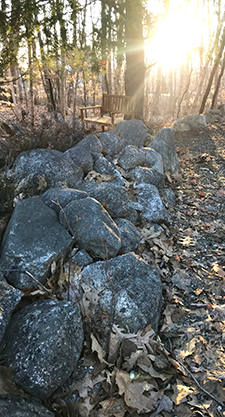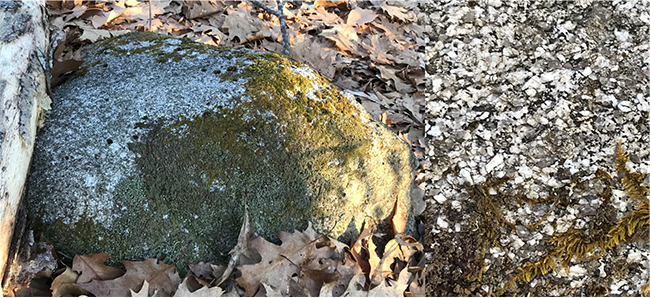 Rock on! - Stone walls

Stone walls make me ponder many things... whose hands lifted the last stone in place? When did the wall building begin... and how many people's hands were involved? How many and what kinds of rocks are in the wall? What was the wall's original purpose and how does it serve now? Sometimes I can answer these questions... as the wall in the photo was built by my father and I have since added to it. For other walls, a bit of a history detective work is necessary. Important details to consider are the location of the wall, if it is dry stacked or has mortar, if the rocks have been left natural or if they have been broken and shaped, the overall shape of the wall - is it a long running pile or a wall that is squared off on the sides and across the top with an even width for its length? Add to these questions and head out on a stone wall adventure!
|
Interesting Facts
- Stone walls in the woods of Maine are most often remnants of the long-ago clearing of forests for pasture and crop land. The rocks found in the soil, and those that pushed up from frost heaves each year were added to the walls. They stone walls are surrounds by forests now because the crop or pastureland was abandoned and the forests reestablished themselves.
- It was estimated in 2002, by Robert Thorson, that there are roughly 240,000 miles of stone walls in New England.
- Some researchers are using LiDAR (Light Detection And Ranging) to map stone walls. A plane with LiDAR equipment flies over the area to be mapped. The pulsing laser light can reach through the breaks in the forest canopy (the leaf cover) and provide a map of the stone walls. They are mapping the walls to learn more about both the cultural and natural history of the land.
 |
The photo on the right showns a rock as seen when standing at a distance. The photo at right is a close-up shot of the same rock. What do you notice? Can this help you identify both the type and kind of rock?
Activities for Children and the Young at Heart
- Find a stone wall to observe and study over time. Ask yourself: Who built it and why? Does is serve that same purpose now? What other benefits may it be serving now? Does it provide any homes or micro-habitats for plants and animals? Make a list of all you want to know about the wall and see what you can find out. Please be sure to leave all the rocks in place in the wall - unless it is on your property and you have permission to move them - but be careful, and do return them after you are done looking.
- Take a close look at the rocks in "your" stone wall. Are they all the same? Get really close - use a magnifying lens if you can, what do you see? What does this help you learn about the rock? (What can you learn from the side-by-side photos above?)
- Take a look at these two sites by the American Museum of Natural History. They may help you identify both the type and kind of rock you are looking at in "your" stone wall. Three Types of Rock. and How do we Read Rocks: Three Types of Rocks Exhibit.
- Take a look at this LiDAR Imagery Article by the Maine Geologic Survey. What can you see with LiDAR other than stone walls?
- Check out the interesting photos and information of the University of Connecticut Stone Wall Initiative website.
- Consider reading Exploring Stone Walls A Field Guide to New England's Stone Walls by Robert Thorson. Learn more about the book and listen to the opening paragraphs.
- Could the 240,000 miles of stone walls mentioned above - if stretched out, reach around Earth at the equator? Could it reach to the moon? How much do you think all this rock weighs?
Share Nature Note with your friends, family, teachers, scouts, and anyone you think might be interested. Here is how they can sign up for a free subscription:
Read back issues online.
Suggest a topic by email; put Nature Note in Subject line and email Jocelyn Hubbell.
|